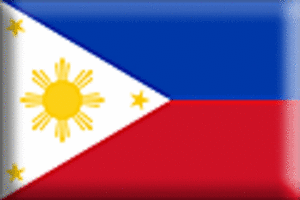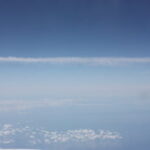First off, I must clarify what the title “Filipino” applies to. A common misconception is that the term “Filipino” stands for the people of the Philippines before the coming of the west in 1521 – the year, which also marks the start of recorded Philippine history and the inculcation of certain tools into our culture, such as the wheel, the plow, cement, roads, bridges, horse-powered vehicles, money, the clock, paper, books, and the printing press. In Nick Joaquin’s essay, “Culture as History,” we learn to see this technology and the “invading” foreigners as media. Joaquin introduces McLuhan’s idea that “the medium is the message”, and he states that the message in the Philippine’s case is metamorphosis.
The new media of the 16th and 17th centuries revolutionized our culture. It gave us a sense of history and a sense of national community . For instance, before 1521, no authentic Philippine date exists, but since the technical revolution after Spain’s arrival, dates of birth have been required for one to be able to go to school, to work, marry, and even get buried. As Joaquin says, “This sense of history carried down to the most personal levels, in turn breeds a sense of community among those who have it”. He believes that the media aided the inhabitants of the Philippines to unite and become “Filipinos”. Before 1521, we could have been everything not Filipino; after 1565 we are nothing but Filipino.
Filipinos are charged of being “corrupted Asians” because of our westernization, and we feel guilt and shame for this. The westerners, in turn, are blamed for tainting our culture. The common misconception is that the Filipinos would have united on their own if the foreigners did not meddle early on. Research opposes this, however, saying that we would have remained a group of separate pagan minorities if the west did not intervene. This is due to our incapability of handling large tasks. Filipinos naturally tend to think small and to handle miniscule projects, which is shown in our intricate pottery designs, weavings and woodwork. There is no evidence of large artworks from before the west’s occupation. Only when we received guidance from foreigners did we start to take on big architectural challenges.
The West should actually be thanked for opening our doors to Asia. The Asians themselves are to blame for our lack of Asian influence. As Nick Joaquin states, culture influences history, so if our culture does not exhibit certain things, then our history is incorrect. Well, our culture back then showed that we were incapable of sea travel, and that our interaction with Asian countries was one-sided. Take the porcelain we acquired from the Chinese, for instance. We possessed the tool but not the technology of porcelain making. We were dependent on the Chinese for the craft and its delivery. They kept us at a disadvantage.
Our mythology also supports the idea that we did not know how to travel by sea. There is a lack of description of sea travel in our stories, and what lies beyond the sea remains a mystery.
Another example of Asia’s neglect is how Islam reached us much later than the rest of Asia. The Philippines was not a priority for them, and even when Islam did reach us, it did not spread with urgency. Islam had been in Asia two centuries before Christianity arrived, and yet it “lost the race to the newcomer” . Only Sulu and part of the southern coast of Mindanao had been converted when the Spaniards came.
We only ventured out into Asia when the Westerners, not our neighbors, gave us the technology for boat making. Indeed, our Westernizing helped us become more Asian, so we should have nothing to be ashamed of. We should take pride in our uniqueness and emphasize the destiny of our special identity. We are Christians in a non-Christian Asia, and we should feel glad for being individual – for “standing out from the herd.”
The question “Who is the Filipino today?” comes to mind now. There are some characteristics that we instantly associate the Filipinos with. We are a hospitable, hard-working, and innovative people. We are food connoisseurs, and we love talking to people over a hearty meal of adobo or pancit. We have modified western technology to cater to our needs. For instance, we created the tricycle and jeep, and used them not only as transportation, but also as billboards of sorts for expressing our opinions. We work abroad as nurses, teachers or domestic helpers, away from our families, just to provide for their needs. We do what we need to in order to get our jobs done, whether or not it is the dirty work.
We are a simple, closely-knit people, as observed through our family gatherings at mealtimes. We do not focus so much on what is eaten as compared to who our company is and what we stories we share. Our meals are considered opportunities for us to overcome barriers between people of different ages and classes. We are a sensitive people, and we observe the littlest things, like how unfinished food at restaurants is a waste, and how it can be remedied through the use of a doggy bag. We pay attention to detail, which is demonstrated through our tremendous beauty culture. We are resourceful, using lime for face powder and fruit juice for lipstick, when the need be.
What is more is that we are a friendly people. While foreigners hire psychologists to hear them out and piece their lives together, we merely contact our friends through e-mail or text when we are abroad (Remoto, 2004). We get enough help from our empathic countrymen.
Our defects are also familiar: we tend to think small instead of dreaming big, thus limiting progress; we are obsessed with foreign beauty instead of loving our own appearance, and we have the dreaded colonial mentality (the habit of patronizing everything foreign). The latter defect is questionable, however, since the Filipinos are a very mixed race. We do range from Tsinoys (Chinese Filipinos) to Mestizos (Spanish Filipinos), but we are all naturalized Filipinos. Visitacion de la Torre brings an important point that our naturalization does not necessarily account for our nationalism. Nationalism is really measured by the person’s concern for the entire country’s well being. The Filipino crab mentality is thus something we should do away with, if we can. This is especially important because we tend to give too much importance to other people’s opinions. For example, some of us only eat at classy restaurants to “eat for prestige or notoriety,” which is pathetic. Others bathe frequently, not because of the heat, but because of the desire to whiten their skin.
We Filipinos have the potential to be great. Our problem is that we tend to lose interest in our projects right away. We start many things, but we never finish. This explains our attraction for fastfoods. They have a wide array of food choices, which suits us Filipinos perfectly. Despite and because of the influences of the Spanish and Americans, as well as our Asian neighbors, we have evolved into a distinct race. We are Filipinos – the fruit of the foreign occupation in the 16th and 17th centuries, the Progpaganda, the Revolution, the First Republic, the People Power Revolutions one and two and more, and we continue to add to our incredible history, “as time goes by” .
References:
Nick Joaquin, “Culture as History”
Visitacion de la Torre, “A Kaleidoscope of Eating”
Quijano de Manila
Danton Remoto
Casablanca



